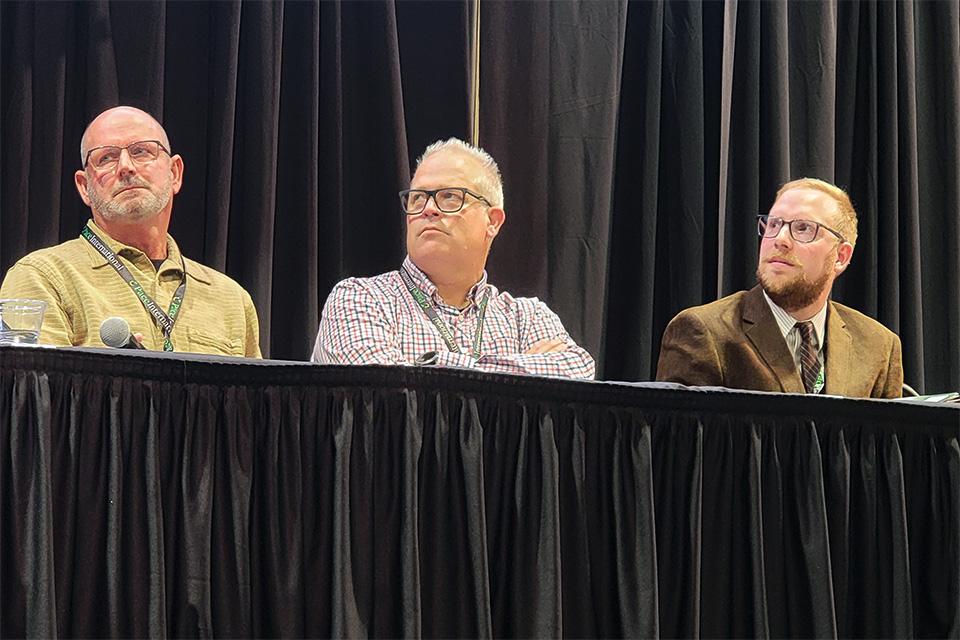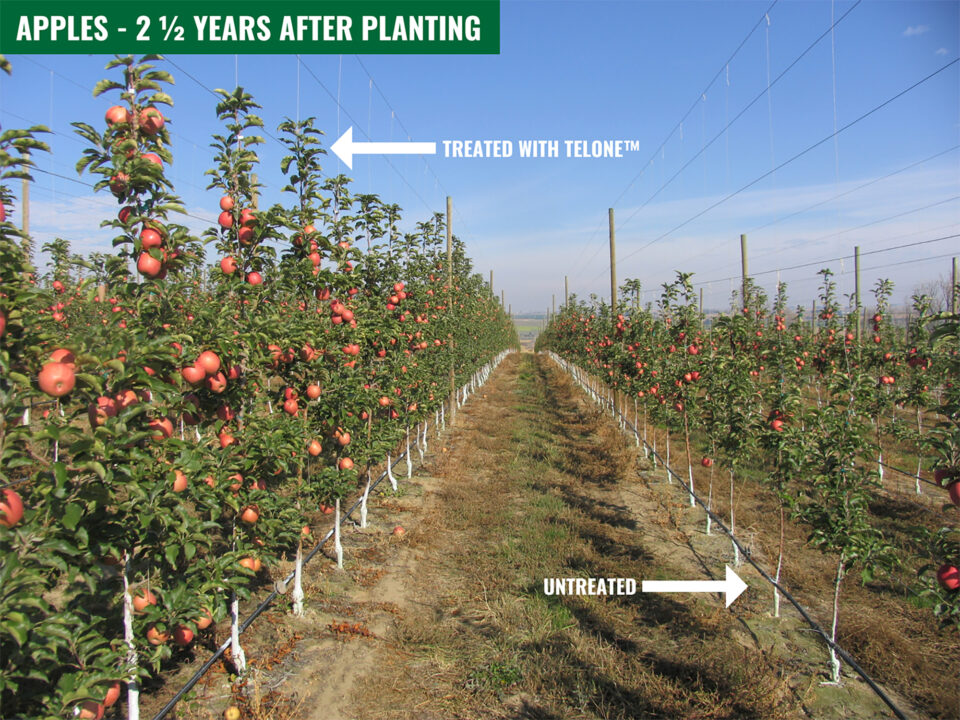The Good and Bad for Washington State Apple Growers
No doubt about it, Marty Olsen said upon opening the 119th annual meeting of the Washington State Tree Fruit Association, it’s tough for the state’s apple growers to be optimistic coming off a monster 140-million box crop.
“Good news is hard to come by in farming these days,” he said, adding growers have little choice but to persevere if they want to succeed. “In no other business are you tied to the land — there’s no option to move.”
The huge crop this year depressed prices at a tough time, as it comes with rising interest rates and labor costs, AgWest Farm Credit’s Erin Kniveton told the audience. While historically, interest rates are about average, they are the highest they’ve been in 16 years. The higher rates translate to a $500 per-acre increase from credit since 2021, she said, assuming growers use loans to finance two-thirds of their operations, forcing growers to make some tough decisions.
“The change in interest rates make marginal blocks unprofitable,” she said.
After Kniveton spoke, a panel of three growers — Keith Oliver of Olsen Brothers Ranches, Shawn Tweedy of Chiawana Orchards, and Jacob Klaus of Gilbert Orchards — addressed the tough times while adhering to the theme of the Kennewick, WA, conference: Deep Roots | New Strategies.
In response to the grower panel titled “What Makes Me Money?” all three growers shared their insights but noted that the question is a difficult one to answer in this environment. While they are watching costs carefully, they generally believe growers aren’t going to save their way to success, not when the only way to make money when times are this tough is to make sure you’re growing target fruit — highly colored apples in the sizes retailers prefer.

Washington State apple growers Keith Oliver (Olsen Brothers Ranches), Shawn Tweedy (Chiawana Orchards), and Jacob Klaus (Gilbert Orchards) address attendees at the 2023 Washington State Tree Fruit Association annual meeting.
Photo by David Eddy
INVEST IN TECH
The three growers agreed.
Oliver: “We do block accounting. We don’t fertilize so much, and you can improve your packout.”
Klaus: “We track costs by block. To make good decisions, you need that information.”
All agree it’s difficult to save on harvesting costs.
Tweedy: “Harvest platforms pay off. They have seen a 20% boost in harvest productivity and reduced ladder falls. Because it’s so difficult, all are anxious to mechanize operations. In my opinion, they’re not there yet, but we’re open to it.”
Klaus: “Aggress on platforms. They reduce L&I claims and help us keep workers, because workers are more productive. However, with platforms, you need to be consistent about working on the tops of the trees. If not, it doesn’t pay off as much.”
Oliver: “They have a lot more women working in the orchard because we’re not using big heavy ladders. Plan on going with self-driving tech to save on labor. There’s a whole bunch (of new technology) coming soon.”
Klaus: “You can’t chase after all the new technology. But you can’t be cheap either. Talk to your neighbors. What are they doing? Start with something small if you’re investing in something new.”
Tweedy: “I agree you have to dip your toes in the water. But
you need to make sure you’re focused on your goal. You’ve got to spend money. The idea you will prune less, and so forth, that’s a death sentence.”
Oliver: “You have to spend money to make money.”
HOW SOON WILL ROBOTIC TECHNOLOGY BE HERE?
Tweedy: “It’s five to 10 years before it’s industry wide. I hope it’s sooner. I hope I’m wrong. But a lot of work still has to be done to make it viable for the grower.”
Klaus: “Yes, it’s still a ways out, especially on harvest. We need to see proof.”
Oliver: “Things are moving fast. It’s coming soon, within five years. But we won’t be first. I don’t want to be on the
bleeding edge.”
Tweedy: “There’s lots of tech out there, but you have to execute on that data.”
WHITHER H-2A?
In cost analysis, is it better to pay OT for four to six weeks or hire H-2A workers, considering you have to pay for their housing, etc.?
Klaus: “Labor cost/overtime is the biggest concern. With the OT rule, they have to hire more labor, perhaps increasing H-2A workers.“
Tweedy: “Agree on OT. Get pressure from the sales desk to produce target fruit. You have to evaluate the costs of OT compared to the cost of bringing in H-2A workers.”
Oliver: “Agree, H2-A workers are excellent. We don’t get locals doing it anymore. Not that great a loss. The local guys don’t work as hard.”
Oliver: “That’s tough to pencil out, but now we have no choice. We couldn’t pick the crop without them. Besides, H-2A workers are 25% to 30% more effective.”
WHAT’S THE PERFECT ORCHARD?
Tweedy: “It’s the million-dollar question. First you have to decide on variety. We’re expensive farmers. We really invest. But if you don’t get the returns, it doesn’t matter.”
Klaus: “Don’t know, but next year we will be planting ‘Honeycrisp’ on a V-trellis.”
When asked how many bins per acre he expected on such a system, Oliver said a good target is 65 to 70 bins per acre. “We could do more, but we don’t want to risk going from 80 to 40 — 70 is the sweet spot.”
HOW DO YOU AVOID SMALL FRUIT?
Tweedy: “Thinning and pruning are necessary, but we also use a bud counting program to pin down what we think crop load should look like and work toward that.”
Klaus: “We do robust chemical thinning at bloom. We do multiple passes, and the earlier the better.”
Oliver: “Tell the crews: Don’t pick the little ones — leave them behind.”









